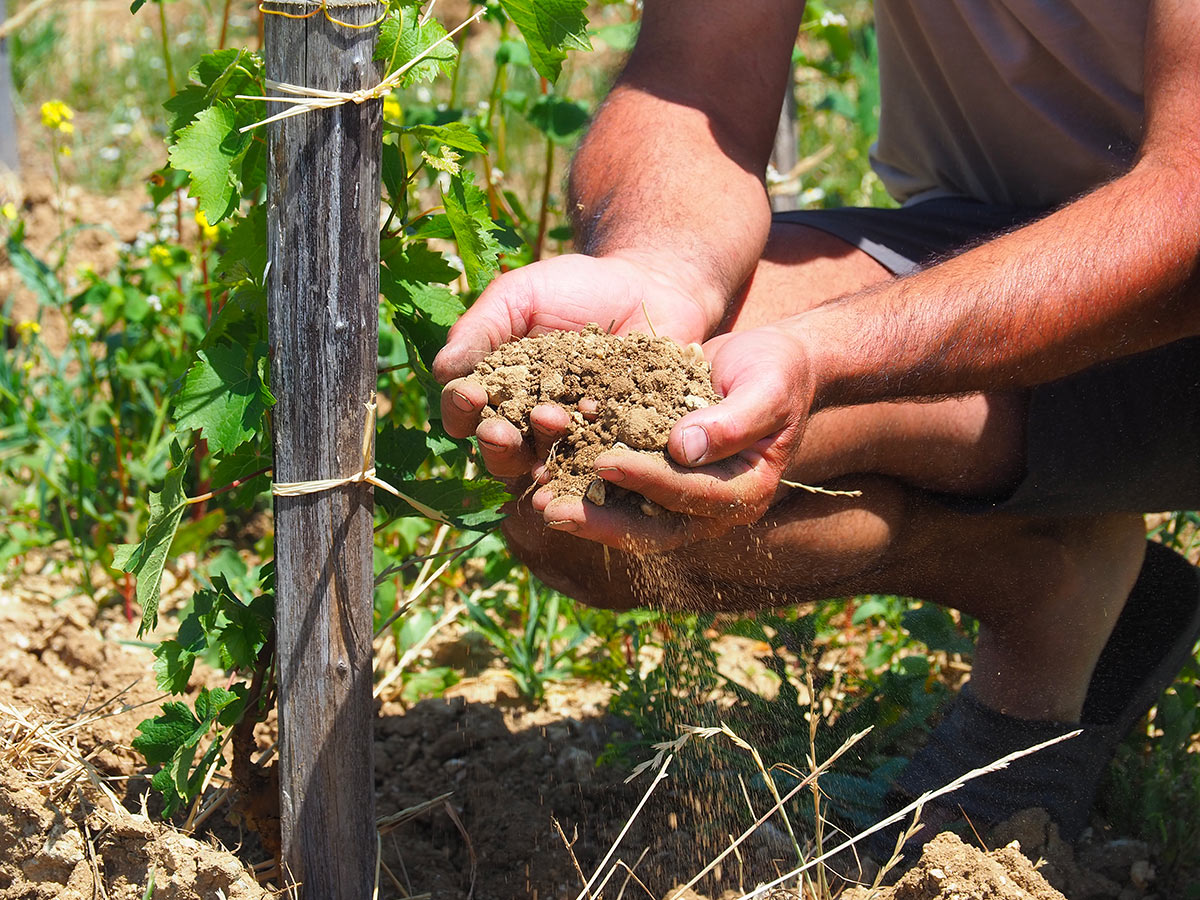The Château Clos de Sarpe vineyard covers 3.7 ha in one block, planted on the clay-limestone Sarpe plateau (on Asteria limestone), with a south, south-east exposure (one too many?). Very consistent terroir at the heart of the greatest terroirs of the appellation. Château Trottevieille, Château Troplong-Mondot, Château Haut-Sarpe, Château Sansonnet, etc.
A pedological study carried out at Château Clos de Sarpe revealed clay-limestone formations of the “molasses du Fronsadais” type (The higher part of this molasse dates from the late Oligocene epoch, making it about 25 million years old) and of the “molasses de l’Agenais” type (This molasse is mixed with weathering deposits from the Asteria limestone.
This limestone, dating from the early Oligocene (about 30 million years old), has been regularly seen in boreholes and pits.
The Molasse de l’Agenais (clay limestone) “has a surface soil thickness of less than 50 cm, resting directly on the limestone rock. The rock is systematically present at a depth of less than 50 cm. These are very well-drained soils, and the root system regularly penetrates the rock.

This underlying limestone rock plays an essential role in water supply, providing drainage in wet periods and returning water by capillary action in dry periods.
The water supply to the vines is often very regular and controlled, which is a guarantee of quality and regularity of production (grapes).”
This exceptional terroir, the prerogative of great wines, allows us to retain freshness, the soil being naturally drained and the vines not suffering from significant water stress.
This terroir also gives the wines their low pH, a guarantee of their conservation over several decades.